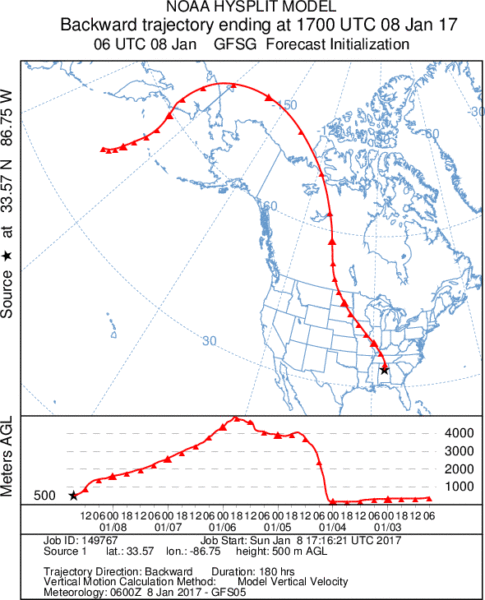Where Did the Cold Come From?
Ever wonder where the air in your location actually came from? Well, using the NOAA’s (National Oceanic and Atmospheric Administration) HYSPLIT model, you can do just that.
The HYSPLIT model is a complete system for computing simple air parcel trajectories as well as complex transport, dispersion, chemical transformation, and deposition simulations. HYSPLIT continues to be one of the most extensively used atmospheric transport and dispersion models in the atmospheric sciences community. A common application is a back trajectory analysis to determine the origin of air masses and establish source-receptor relationships. HYSPLIT has also been used in a variety of simulations describing the atmospheric transport, dispersion, and deposition of pollutants and hazardous materials. Some examples of the applications include tracking and forecasting the release of radioactive material, wildfire smoke, windblown dust, pollutants from various stationary and mobile emission sources, allergens and volcanic ash.
So I ran the HYSPLIT model this morning using Birmingham, AL, as the end point, asking the program to track back the trajectory of the air in place here. Using the latest GFS model data, it provided me with this map showing that our air, our cold air, began seven and a half days ago over the northern Pacific.
So the air that brought frigid conditions to Central Alabama this morning actually began in the North Pacific southwest of the Aleutian Islands around 500 feet and following a path that brought it southward across a large portion of western Canada until its arrival here. Our atmosphere is absolutely amazing!!
-Brian-
Category: Alabama's Weather, Winter Weather
















